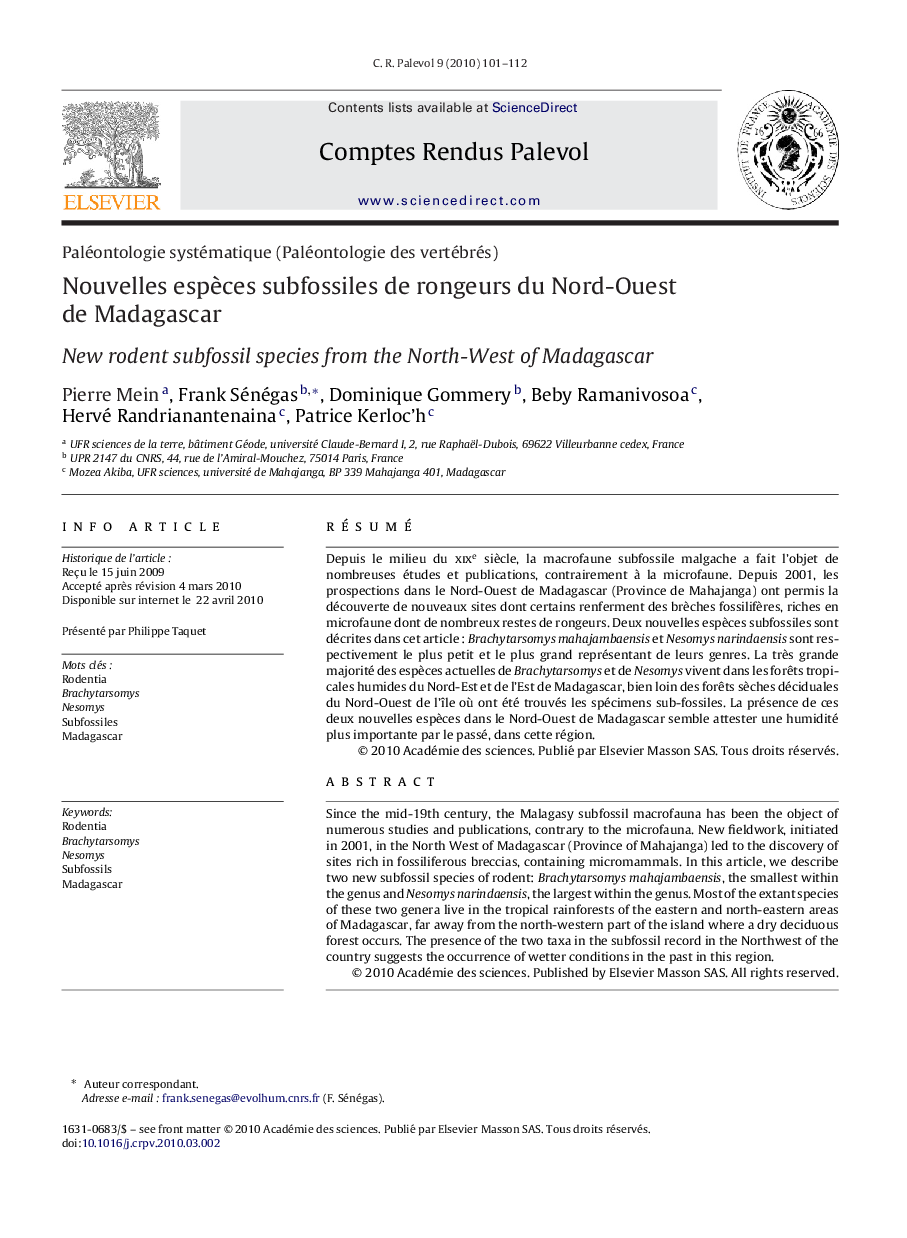| Article ID | Journal | Published Year | Pages | File Type |
|---|---|---|---|---|
| 4746451 | Comptes Rendus Palevol | 2010 | 12 Pages |
RésuméDepuis le milieu du xixe siècle, la macrofaune subfossile malgache a fait l’objet de nombreuses études et publications, contrairement à la microfaune. Depuis 2001, les prospections dans le Nord-Ouest de Madagascar (Province de Mahajanga) ont permis la découverte de nouveaux sites dont certains renferment des brèches fossilifères, riches en microfaune dont de nombreux restes de rongeurs. Deux nouvelles espèces subfossiles sont décrites dans cet article : Brachytarsomys mahajambaensis et Nesomys narindaensis sont respectivement le plus petit et le plus grand représentant de leurs genres. La très grande majorité des espèces actuelles de Brachytarsomys et de Nesomys vivent dans les forêts tropicales humides du Nord-Est et de l’Est de Madagascar, bien loin des forêts sèches déciduales du Nord-Ouest de l’île où ont été trouvés les spécimens sub-fossiles. La présence de ces deux nouvelles espèces dans le Nord-Ouest de Madagascar semble attester une humidité plus importante par le passé, dans cette région.
Since the mid-19th century, the Malagasy subfossil macrofauna has been the object of numerous studies and publications, contrary to the microfauna. New fieldwork, initiated in 2001, in the North West of Madagascar (Province of Mahajanga) led to the discovery of sites rich in fossiliferous breccias, containing micromammals. In this article, we describe two new subfossil species of rodent: Brachytarsomysmahajambaensis, the smallest within the genus and Nesomysnarindaensis, the largest within the genus. Most of the extant species of these two genera live in the tropical rainforests of the eastern and north-eastern areas of Madagascar, far away from the north-western part of the island where a dry deciduous forest occurs. The presence of the two taxa in the subfossil record in the Northwest of the country suggests the occurrence of wetter conditions in the past in this region.
